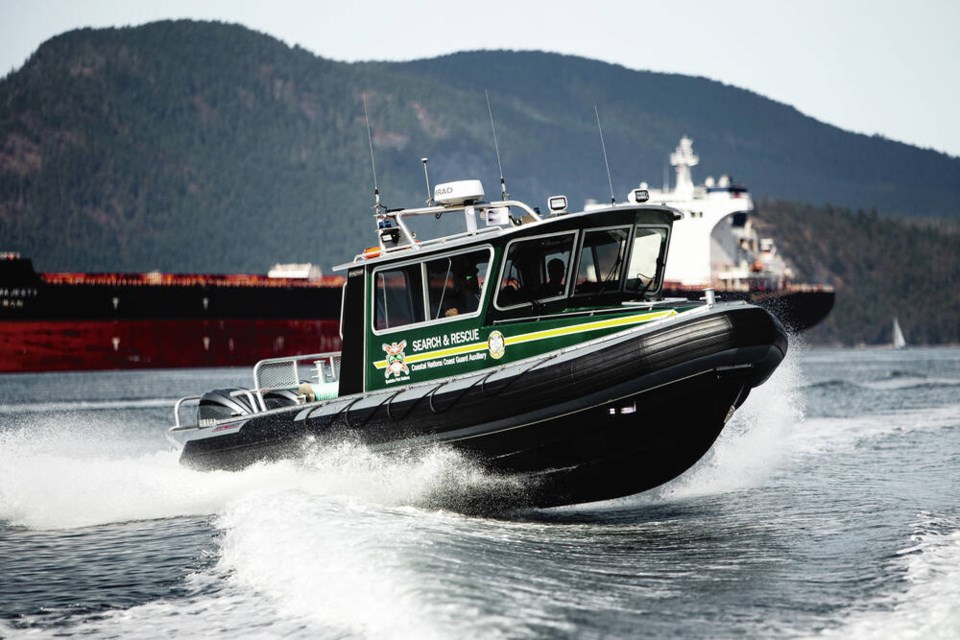Two Indigenous communities have joined the Coastal Nations Coast Guard Auxiliary with modern vessels to assist in search-and-rescue operations and maritime response patrols.
The Quatsino First Nation, on the northwest coast of the Island, and Kitasoo Xai’xais First Nations, located in Klemtu in the heart of the Great Bear Rainforest, launched dedicated response vessels under the Canadian Coast Guard’s Indigenous Community Boat Volunteer Pilot Program.
There are now seven First Nations with vessels and training along the B.C. coast.
The volunteer members of each First Nation work and train with the Canadian Coast Guard, providing marine response within their respective traditional territories.
The coast guard said First Nations have a long history of responding to marine emergencies and hold extensive traditional knowledge of the local waters and conditions in their traditional territories. They are often first on the scene of an emergency — the latest last month, when members of the Ahousaht First Nation assisted in helping passengers of a water taxi that hit rocks, seriously injuring four people.
Funding for the vessels and training comes from the federal government’s $1.5-billion Oceans Protection Plan. The Quatsino First Nation received $368,000 and the Kitasoo Xai’xais Nation $252,000 for the boats built to their specific needs and marine environment.
“We are now equipped, trained and looking forward to providing service while on call and on regular patrols to ensure safety on the water,” said James Wallas, a board director with the Quatsino First Nation’s Coastal Nations Coast Guard Auxiliary.
“Our crew welcomes the new search and rescue vessel, Quatsino Spirit, and is looking forward to operating alongside the Canadian Coast Guard to continually improve our skills and to be mission ready.”
The Quatsino Spirit, a 27-foot vessel capable of cruising at 44.5 knots, is already in service, with members of the nation participating in two recent search-and-rescue training exercises with coast guard ship John P. Tully.
The Kitasoo Xai’xais Nation will support search-and-rescue in the waters around the Great Bear Rainforest in their new response vessel, the Ksm Wutsi’in (Mousewoman), a 30-foot vessel capable of cruising at 25 knots.
“As coastal Indigenous people, Kitasoo Xai’xais Nation have been responding to mariners in distress for thousands of years, whether those in need of rescue come from our Nations, or guests to our waters,” said Doug Fraser, an alternate board director with the auxiliary group.
“Having a dedicated search-and-rescue vessel will potentially help rescue more people and protect the lives of rescuers. This last piece is critical towards harnessing the power of local knowledge of the waters and the areas.”
The Coastal Nations Coast Guard Auxiliary is Canada’s first all-Indigenous Coast Guard Auxiliary, with more than 50 members from Ahousaht, Heiltsuk, Gitxaala, Nisga’a, Kitasoo Xai’xais, Quatsino and Kyuquot/Cheklesahht First Nations.
The volunteer members are trained in cold-water rescue, search techniques, marine first aid, inter-agency communications protocols and the use of specialized rescue equipment by the Canadian Coast Guard. They also train with other first responders in their communities, and are on-call to respond to marine emergencies at any time in remote areas along the B.C. coastline.



